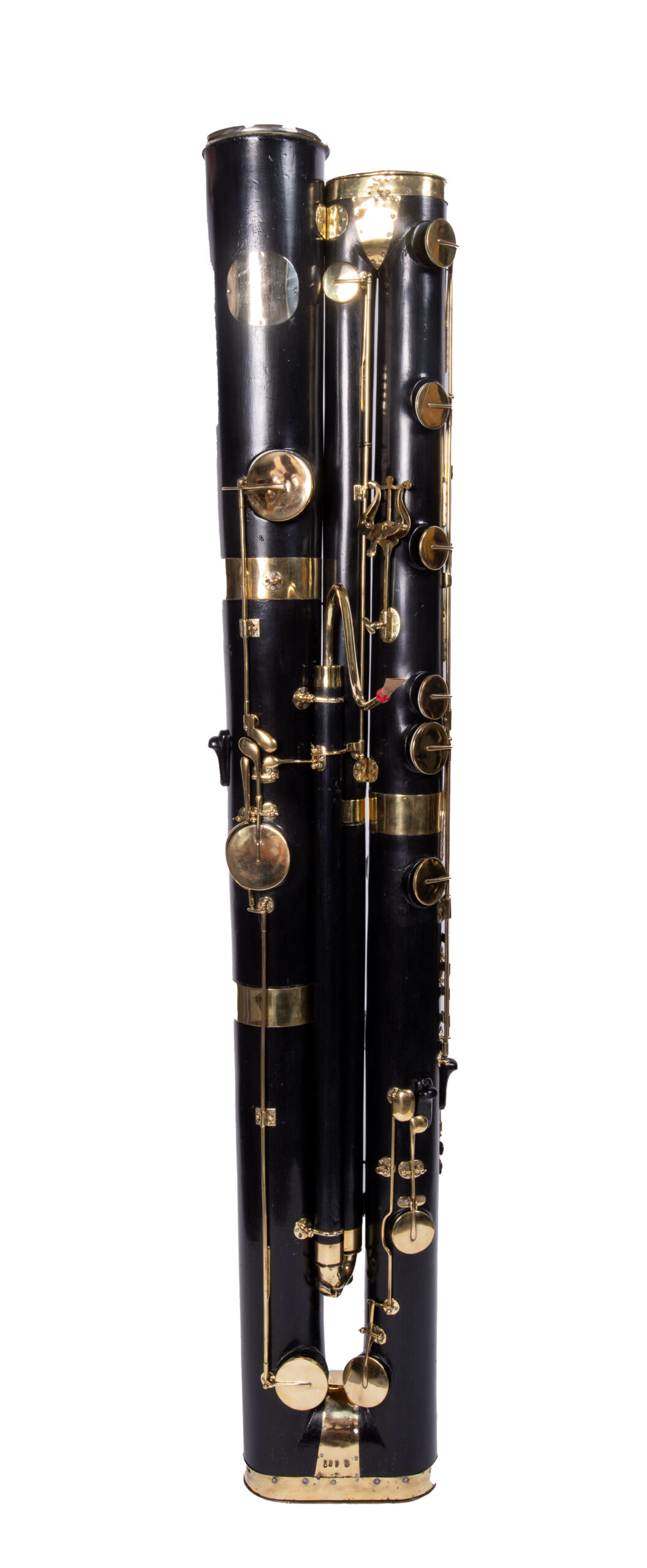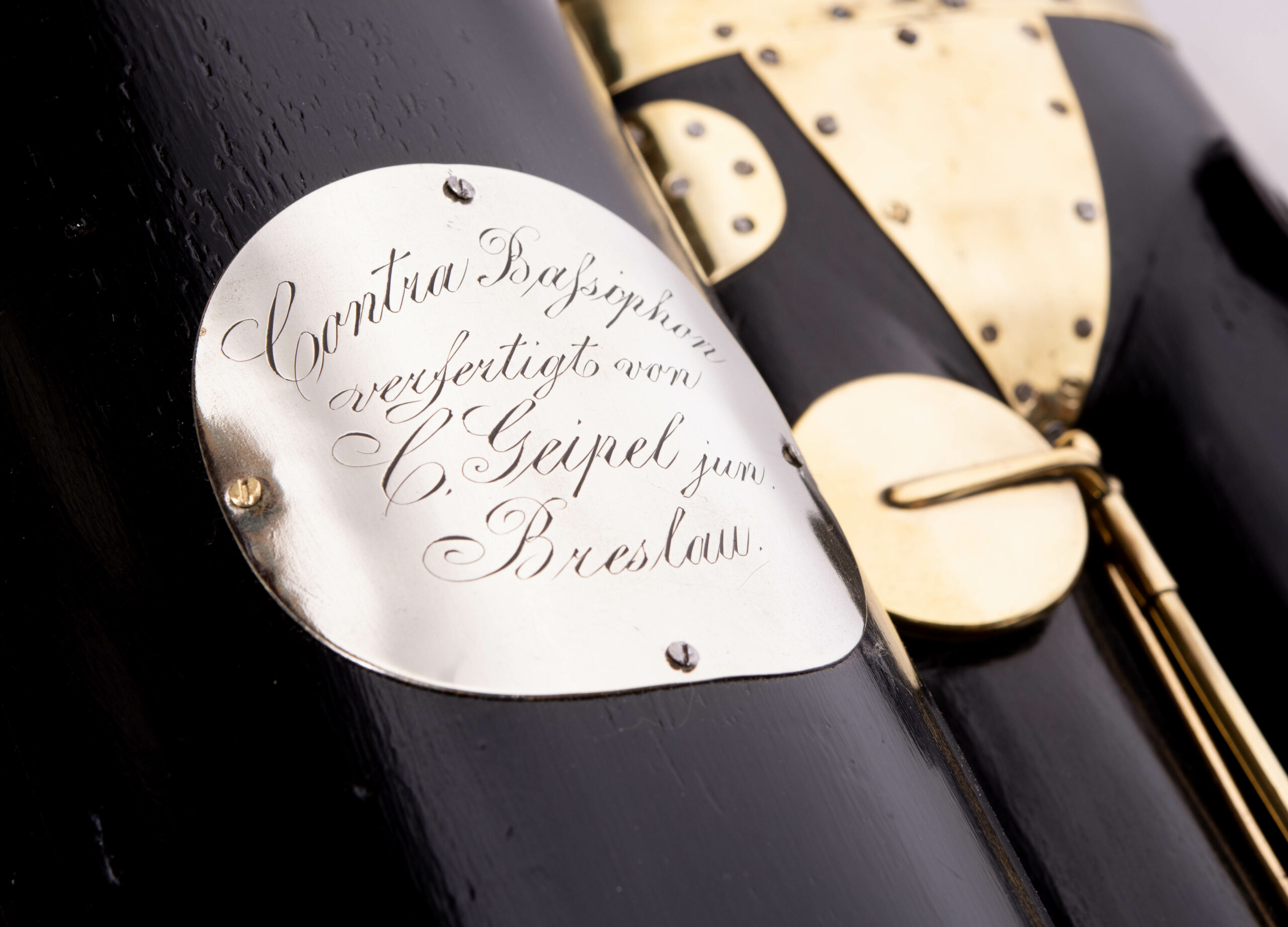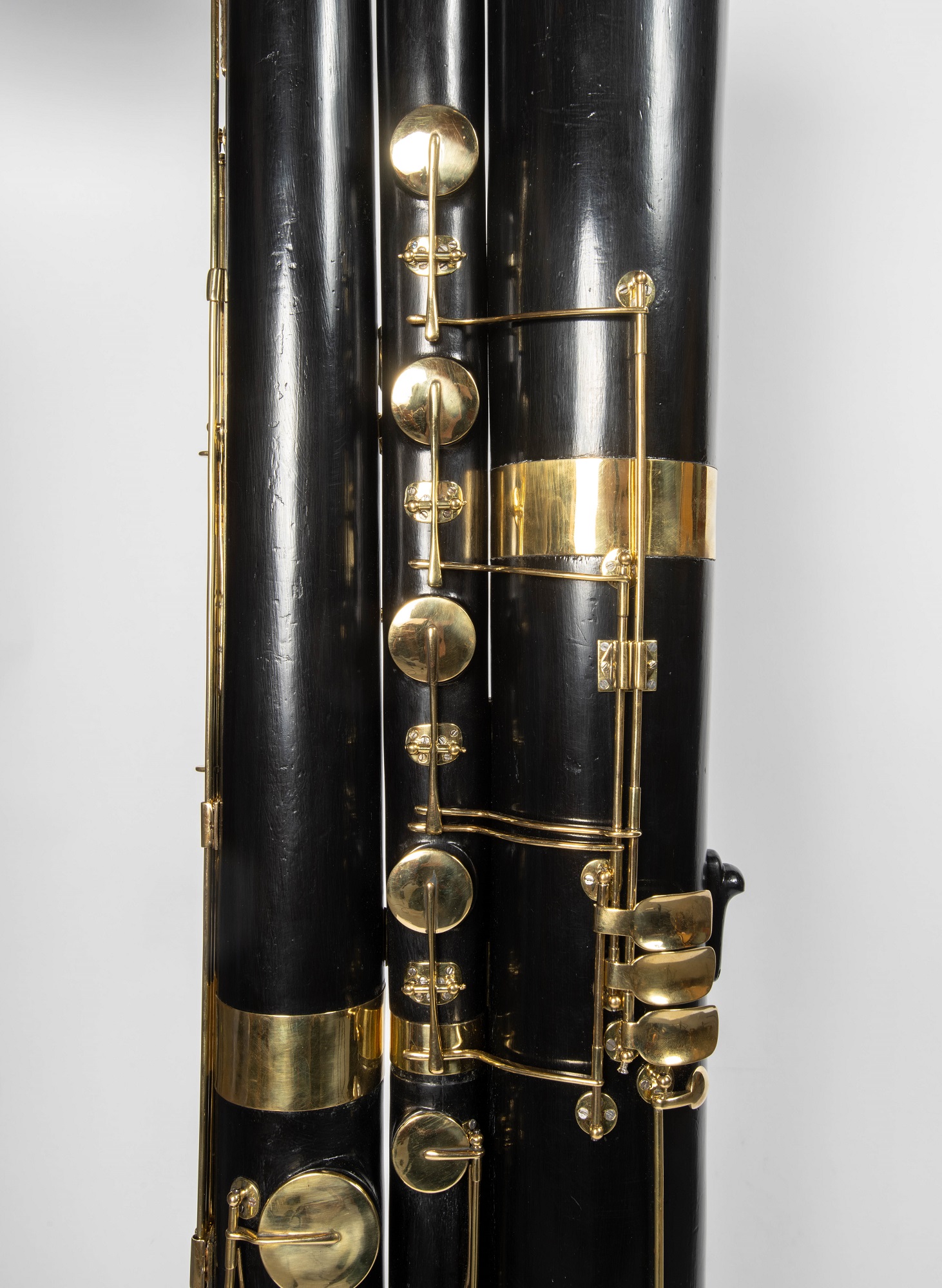CONTRA BASSOPHON
C. Geipel in Breslau.
Stamped on a plaque attached to the bell: “Contra Bafsophon / verfertigt von C. Geipel iun Breslau”. (Double bassophone made by C. Geipel in Breslau)
The need to strengthen the expression of the lower parts in the orchestra aroused interest in new research in instrumental construction. The “Contrebassophon”, invented in 1847 by Heinrich Joseph Haseneier (1798-1890), is one of the most impressive examples.
It is made up of three main maple tubes, parallel to each other and connected by brass bent tubing, on which a mechanism of rare complexity is attached…
The double bassophon influenced different makers throughout the 19th century, such as Geipel from Breslau (today Wroclav in Poland) Doelling from Potsdam, Bradka from Gumplodskirchen, to Alfred Morton from London.
The difficulties of adjustment, the bulk and the weight of the instrument obviously caused its disappearance.
Christoph Geipel and his brother Carl Wilhelm worked in the same father’s workshop in Breslau. William Waterhouse indicates a double bassophone signed “Chrp. Geipel” for Christoph, while he indicates “C. Geipel” as the mark of his older brother Carl-Wilhelm. Based on William’s “New Langwill Index”, we therefore consider that the instrument is by Carl Wilhelm Geipel



